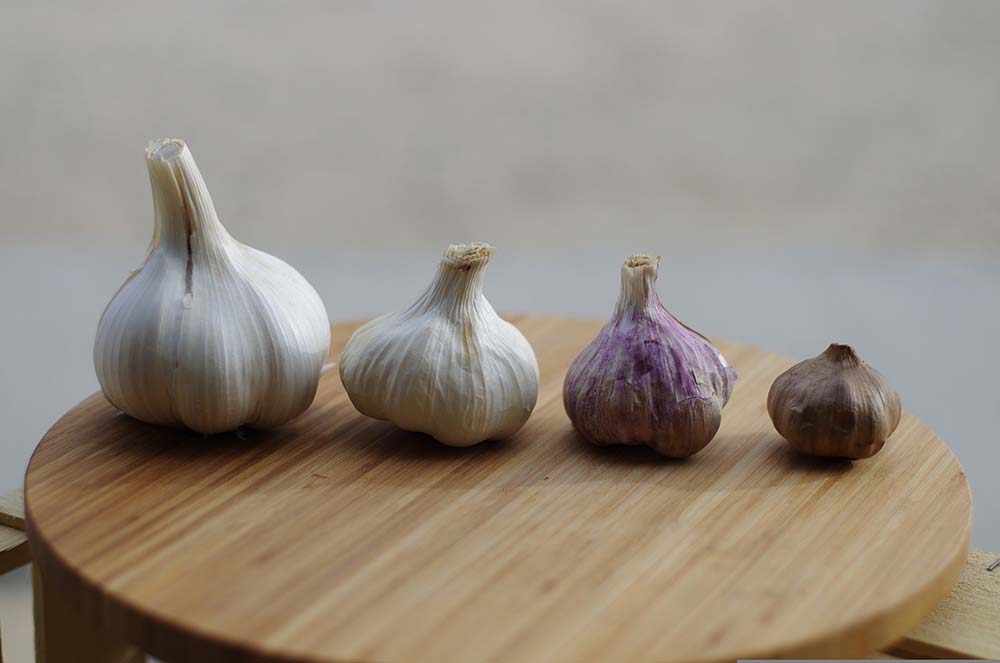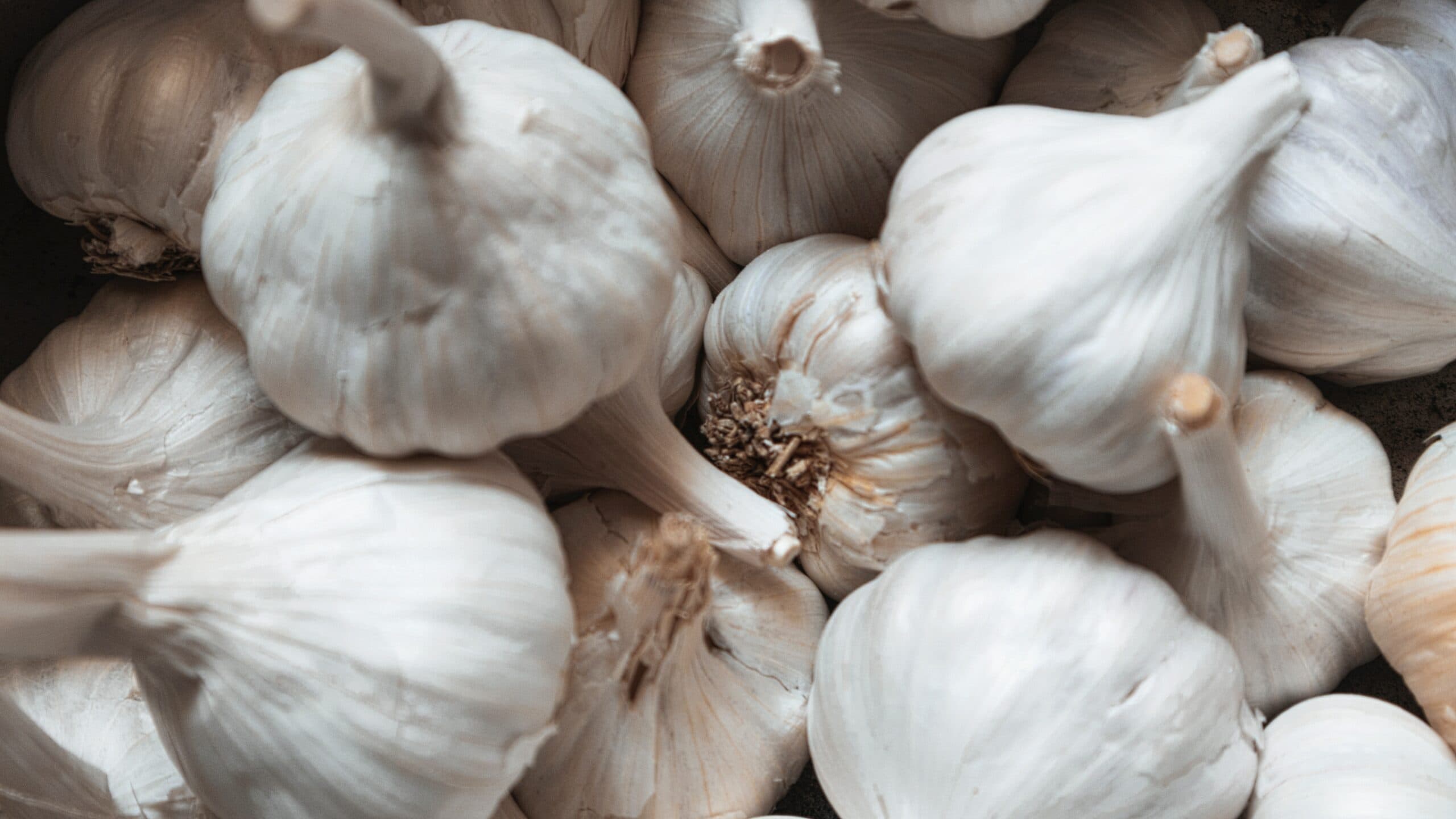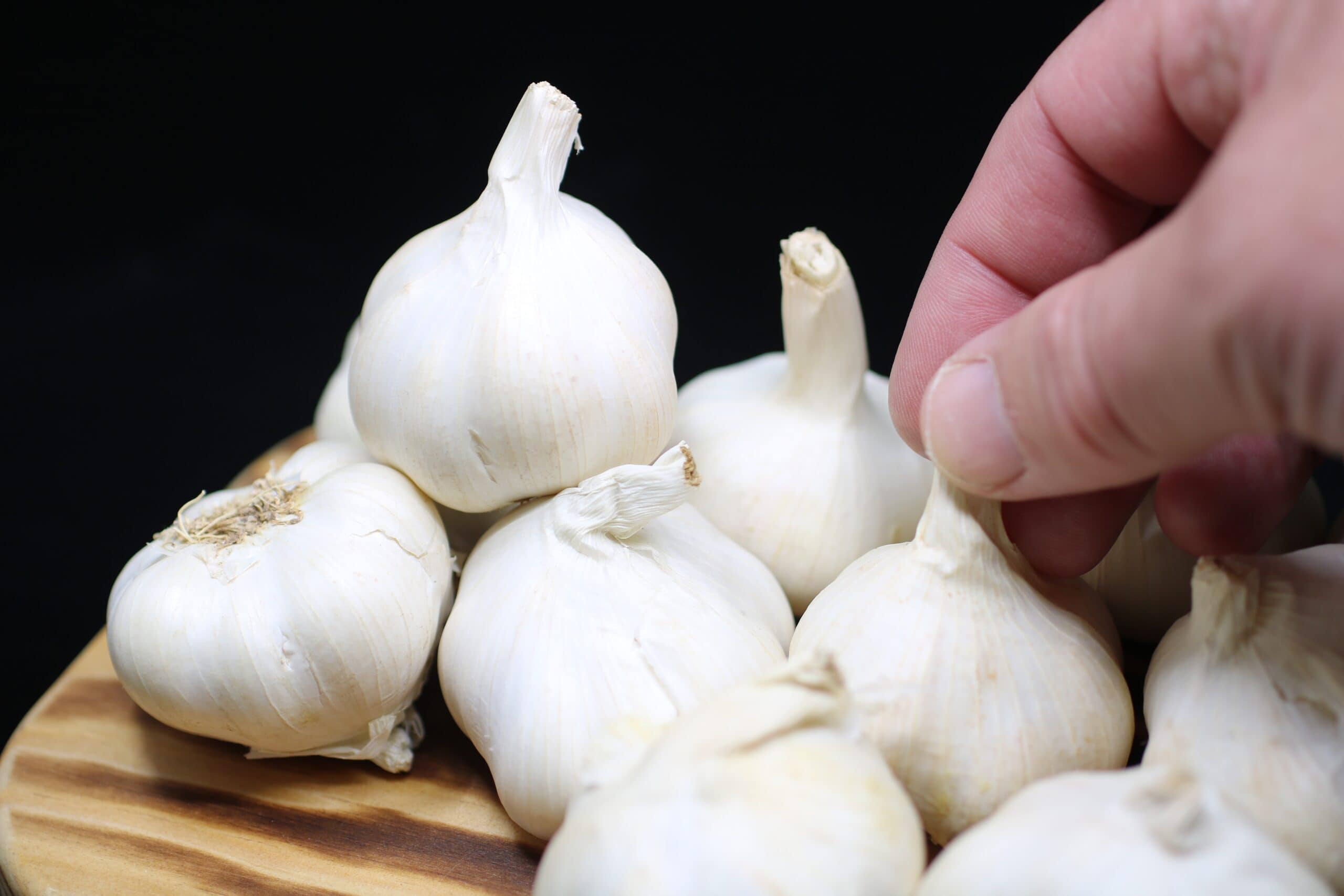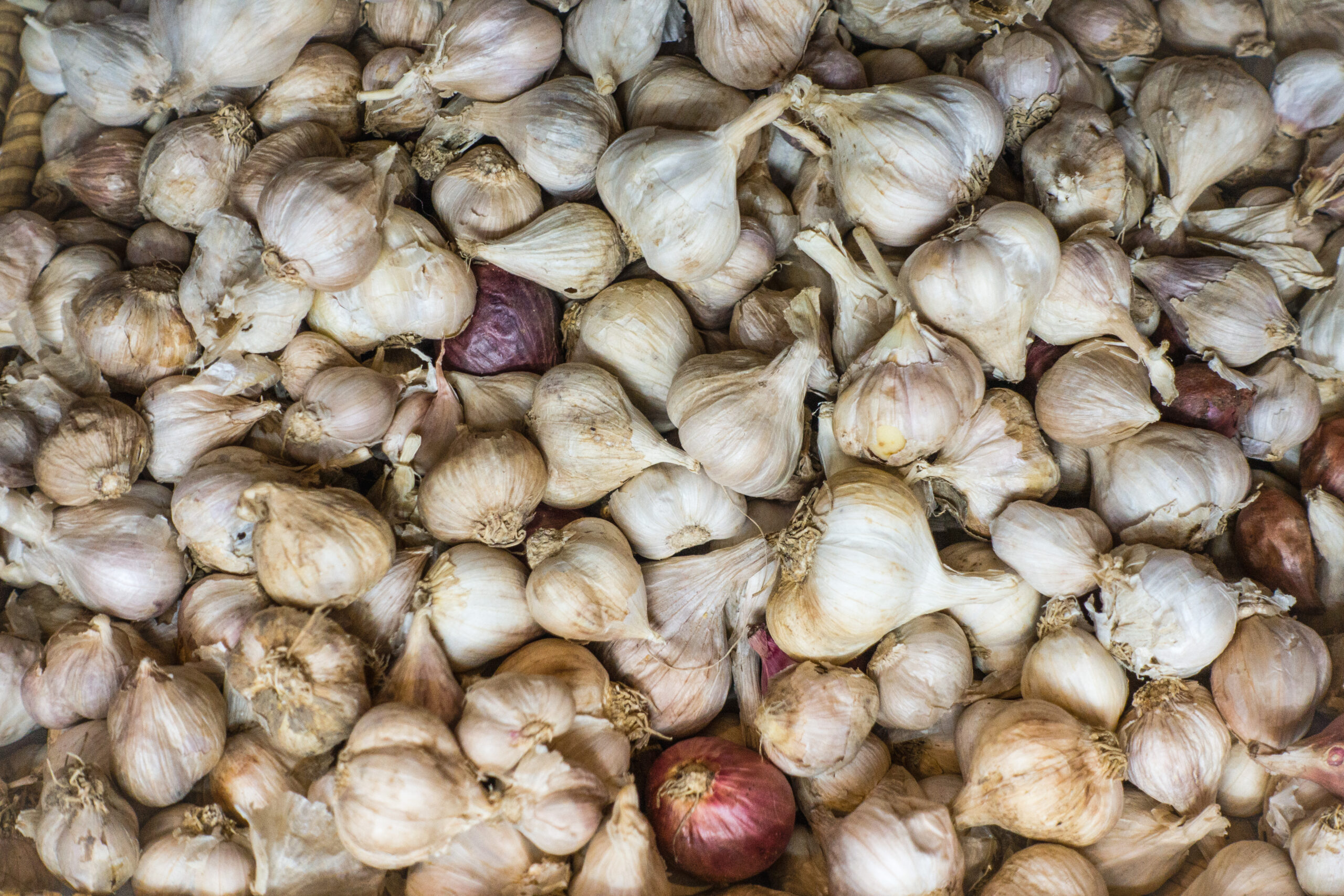7 Best Garlic Varieties to Grow at Home (With Pictures)
-
Codee Chessher
- Last updated:

Garlic is one of our favorite kitchen ingredients, originally grown in China. Softneck and hardneck garlic are the two main types, and they’re grown in differing climates. Overall, though, there are over 600 known varieties of garlic, so you’re sure to find one or two you can grow yourself. Let’s check out some of those below.
The 7 Best Garlic Varieties to Grow at Home
1. Music (Allium sativum)

| Type: | Hardneck |
| Height: | 18 inches |
Porcelain garlic is one of the most popular hardneck garlic varieties grown in cold climates because it is hardy and easy to grow for novices. Of those, Music is a fan favorite at the market for its rich, hot flavor and thick wrappers. When grown in your garden, you can see anywhere from two to five cloves per bulb, but it tends to produce a lot. This garlic originally came from a man named Al Music in Italy who brought it to Canada, where it became popular.
2. Spanish Roja (Allium sativum var. ophioscorodon)

| Type: | Hardneck |
| Height: | 24 inches |
This kitchen staple garlic is sometimes called Greek Blue for its bold coloring, but it was thought to have been brought from Spain to the Pacific Northwest in the latter 19th century. The outside wrapper is typically white, but it peels off to reveal the garlic’s rich color. Cooks love this garlic’s versatility in flavor—it’s hot when raw but gets a sweeter, milder flavor when cooked. This garlic is also notable for being rather tall, measuring up to 24 inches.
3. German White (Allium sativum)

| Type: | Hardneck |
| Height: | 18 inches |
Most people in the US are familiar with this garlic, which is widely available in grocery stores everywhere. It’s commonly grown in northern states and Canada because it’s extremely cold-hardy. It’s considered porcelain garlic, developing thick white wrappers that are particularly easy to peel. The flavor is pretty mild compared to other garlic, suitable for using raw or cooked when you don’t want a super intense garlic flavor in your food.
4. Creole Red (Allium sativum var sativum)

| Type: | Creole |
| Height: | 18 inches |
This unique garlic is considered a class of its own, with white wrappers that peel to reveal a bright, striking skin. Many times, they’re compact like a softneck, but in other cases, they’ll grow a hardneck-like stalk in the center. Creole garlic has a preference for warmer climates, which is why they’re largely grown in Texas and California in the US. However, any state with warm and mild climates is suitable for growing this rich garlic.
5. Elephant Garlic (Allium ampeloprasum)

| Type: | Elephant garlic |
| Height: | 3 feet |
This massive garlic earns its name with a huge height, growing up to 9 inches around as well. Often called and sold as garlic, elephant garlic is more closely related to onions than garlic. Warm climates are preferable for growing this garlic because of its large size. In the kitchen, you’ll be happy with its easy-to-peel skin and mild flavor. The flavor is a cross between garlic and onion, which is perfect for a ton of meals.
6. Korean Red

| Type: | Hardneck |
| Height: | 18 inches |
Korean Red garlic actually grows distinctly purple markings, but the name stuck. The flavor is said to be akin to citrus, and it even fares well in warm climates. As an Asiatic garlic, Korean Red is great in the garden because it can mature up to weeks ahead of schedule under ideal conditions.
7. Artichoke Garlic

| Type: | Softneck |
| Height: | 24 inches |
Not to be confused with the regular artichoke, artichoke garlic is so named for its overlapping cloves. It’s widely grown in California for sale because of its large cloves, but artichoke garlic is found all over the US in grocery stores. Of all garlic types, artichoke garlic produces one of the largest yields.
What Type of Garlic Should I Grow?
Your climate will determine whether you can grow hardneck or softneck garlic. The key difference is that the latter has a few large cloves and a stem, while softneck garlic has smaller but more cloves. Hardneck garlic also does better in cool climates and tolerates cold very well, while softneck garlic is the better choice for warm climates.
In cool climates, we recommend growing a porcelain hardneck variety, like the music garlic variety. It’s beloved among all gardeners, but it’s especially easy for beginners to grow with minimal fuss.
For those in warmer areas, creole garlic is your best bet. It isn’t too picky about soil conditions and usually has characteristics of the other two garlic types. It also tolerates humidity and aridity found in the western US, so that makes it a perfect zone for growing.
Conclusion
Garlic is relatively easy to grow in most climates, with most varieties growing well in both very cold and warm climates. If your area gets very cold, opt for a hardneck, like Music or German White. For warmer locales, go with Creole Red or Elephant Garlic.
Featured Image Credit: Maison Boutarin, Pixabay
Contents
